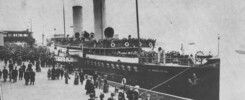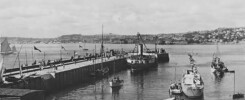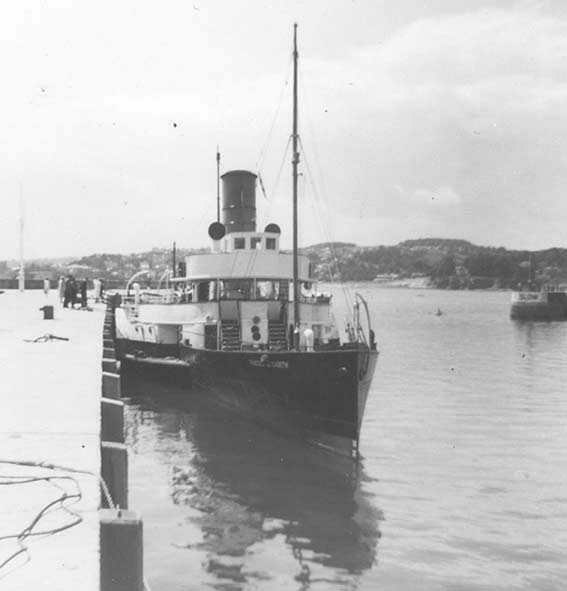
The last Devon based paddle steamer to operate an excursion from Torquay to Plymouth was the Princess Elizabeth seen in this picture alongside Haldon Pier, Torquay.
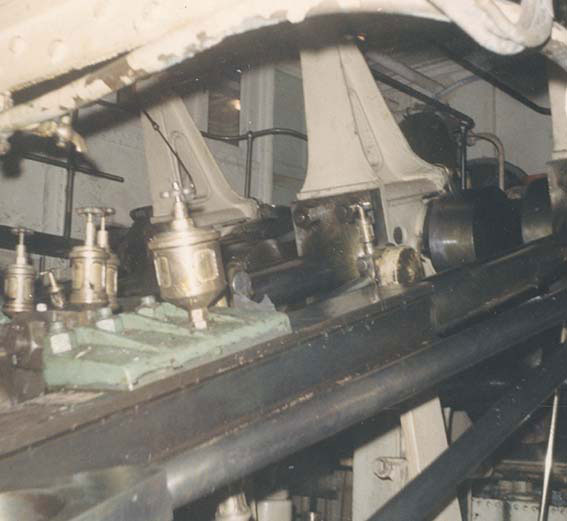
Built in 1927 for Red Funnel’s Southampton to Cowes ferry service (for which she could carry cars on her foredeck), for tender work and excursions, she was spare boat at Southampton for much of the 1950s seeing comparatively little use and much attentive maintenance as she lay idle alongside the Royal Pier so, when she was put up for sale with the arrival of the new car ferry Carisbrooke Castle in 1959, she was in quite good condition for her age.
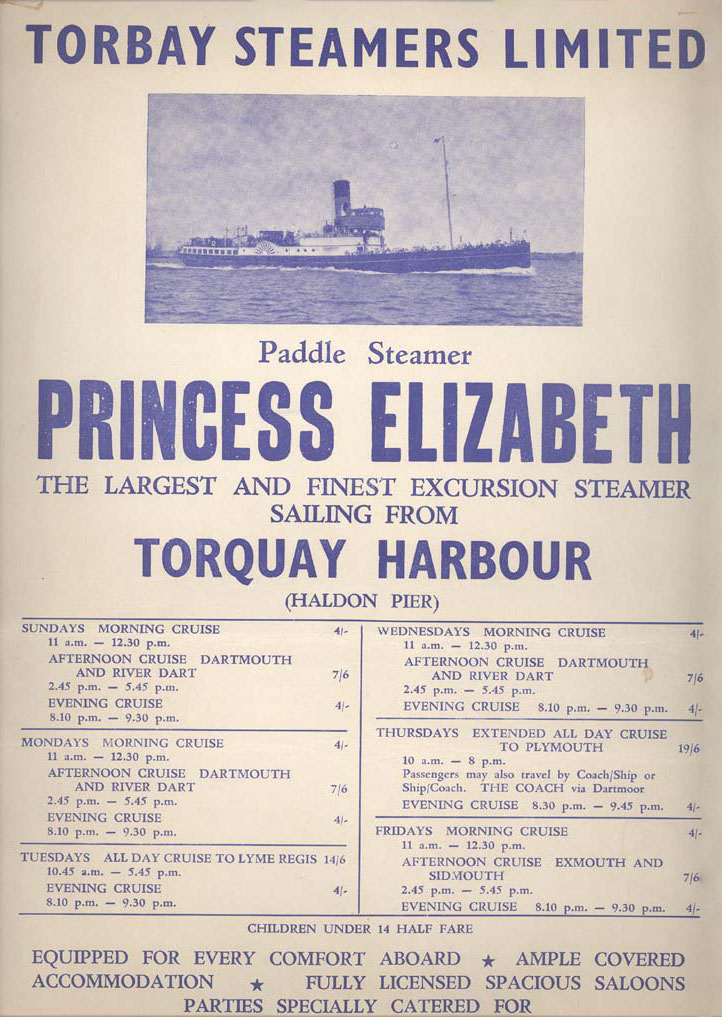
She was snapped up by Torbay Steamers, whose head man was Cdr Edmund Rhodes, and put into service from Torquay in early May 1960 on a schedule which combined morning and evening cruises with afternoon non landing trips to Dartmouth or Exmouth and Sidmouth and day trips initially advertised to sail to Lyme Regis on Tuesdays and Plymouth on Thursdays.
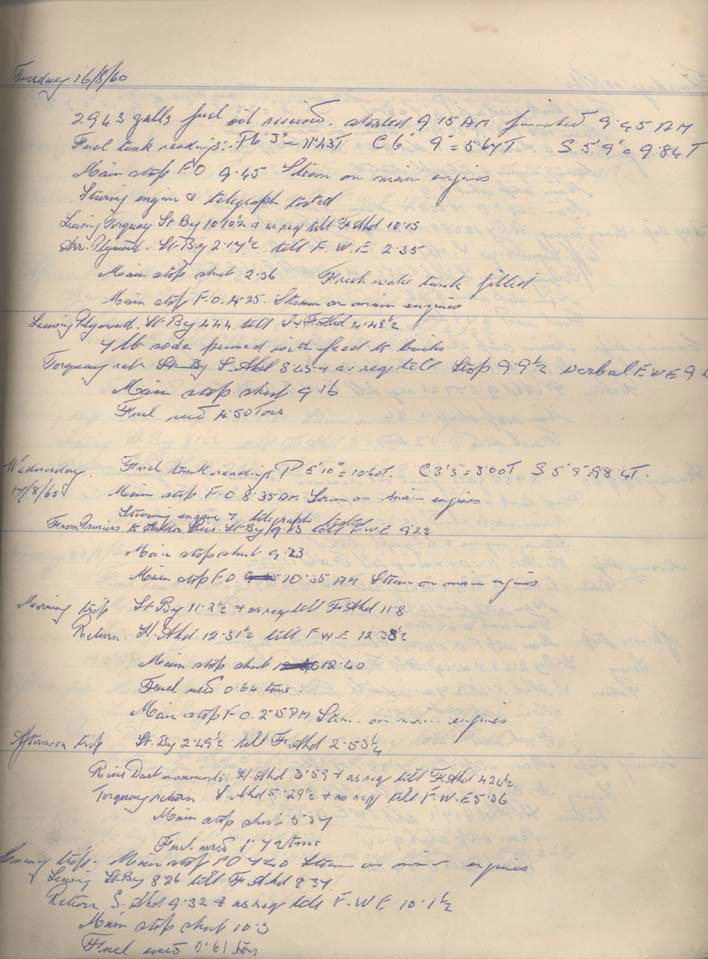
Pictured above is Princess Elizabeth’s engine room log for that season which makes fascinating reading recording what the ship actually did, what fuel and water were taken aboard and how the vagaries of wind, weather and passenger numbers sometimes disrupted her advertised schedule.
The log records the first day trip to Plymouth as being on Thursday 2nd June with full away from Torquay at 10.08am and finished with engines at Millbay Dock at 2.08pm, a four hour trip. With just over one hour ashore for the passengers, 1.34tons of fresh water was taken aboard and the Lizzie was off again, full away at 3.28pm and finished with engines back at Torquay at 7.25pm. 4.86 tons of fuel was used on the round trip.
The following Thursday 9th June she came across from Brixham, where she had spent the previous night, for 10am but did not run to Plymouth due to the weather.
The week after, on Thursday 16th June, she sailed from Torquay at 10.10am but encountered thick fog at 11.09am and this gave her a late arrival time of 2.51pm at Plymouth. And remember the Princess Elizabeth had no radar or any other sort of modern navigational kit. She had a compass, lead line and medium frequency radio and that was it. She left Plymouth at 4pm and was late back in Torquay at 8.38pm giving her a very fast turn round for the evening cruise which sailed ten minutes later.
The Plymouth trip then ran on Thursdays 23rd and 30th June but was cancelled due to the weather on 7th July. It operated on 14th July, during which, at 4.07pm and 4.09pm, the log cryptically records “bump felt” and “another bump felt”, and on 21st and 28th July but, for some unknown reason, after that it was swapped with the Lyme Regis trip and next ran on Tuesdays 2nd and 8th August. The following week on Tuesday 16th August Princess Elizabeth was late arriving at Plymouth, not ringing finished with engines until 2.35pm and not getting away until nearly 4.50pm which gave her a very late arrival time back at Torquay of 9.10pm causing her to miss the evening cruise.
After that there were no more trips to Plymouth. She continued with her local cruises and ran to Lyme Regis on Thursdays up to 15th September, finishing her Torquay season on Wednesday 21st September and laying up for the winter at Philip’s Yard on the Dart the following day.
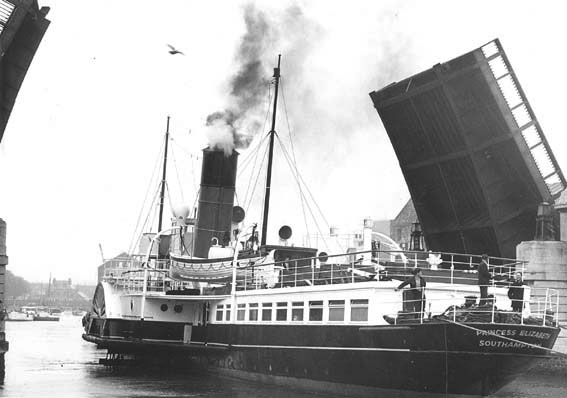
Princess Elizabeth (pictured here passing through the Town bridge at Weymouth in September 1961) returned to Torquay in 1961 offering a similar schedule including the day trip to Lyme Regis on Thursdays but Plymouth was quietly dropped. With a round trip steaming time of more than eight hours instead of six to Lyme Regis the operating costs were higher with the log recording fuel consumption on the Plymouth trip as between 4.5 tons and 5.76 tons, depending on whether the ship had the tide with her or against her, compared to between 2.5 tons 3.4 tons to Lyme Regis.
Add to that that the trip to Plymouth is much more exposed to the weather. In the prevailing south westerly winds it is fairly sheltered in the lee of the land past Berry Head and across Start Bay until you get to Start Point but after that you are out in the tail end of the Atlantic. And whatever the sea is off Start Point it is usually worse off Prawle Point as the depth comes up fast from more than 50m to less than 20m making the waves steeper. And then the course from there across Bigbury Bay to Plymouth is almost NW which puts the boat practically broadside on to the prevailing SW swell making her roll badly or adds a significant and time consuming dog’s leg if you try to manage that. From Torquay to Lyme Regis it is pretty much NE out with the prevailing south west wind astern and SW back heading straight into it giving everyone a smoother ride if the weather is not so good.
And so it ever was. T W E Roche recounts in his fascinating little book A Shipman’s Tale sailing on the paddle steamer Duchess of Devonshire in the 1920s “The run across the bay fulfilled my worst expectations: the wind was broadside on and the Duchess was very lively. The funnel started to describe arcs in the sky, the helmsman, as I could see from my seat just below him, seemed to be having some difficulty in holding the wheel and with each roll she buried her sponson under the waves. We did some dirty trips to Plymouth.”
So that was that. The last Devon based paddle steamer trip from Torquay to Plymouth was undertaken by the Princess Elizabeth on Tuesday 16th August 1960.
Kingswear Castle returned to service in 2023 after the first part of a major rebuild which is designed to set her up for the next 25 years running on the River Dart. The Paddle Steamer Kingswear Castle Trust is now fund raising for the second phase of the rebuild. You can read more about the rebuilds and how you can help if you can here.
John Megoran

